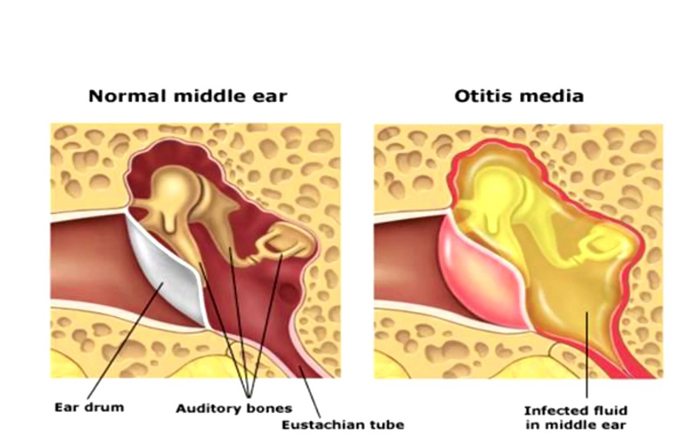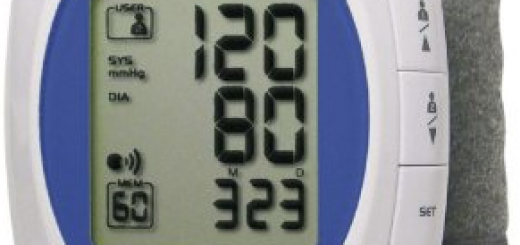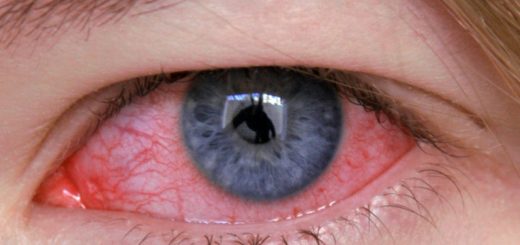Middle Ear Infections in Children
Earaches are very common in early childhood. By age three, two-thirds of children have had an ear infection, and half of this group get them repeatedly.
In infants and preschoolers, the middle ear, which lies between the eardrum and the tiny bones of the inner ear, is most prone to infection (otitis media).
Signs and Symptoms of Middle Ear Infections
Middle ear infections typically develop when a child has already been suffering from a cold for a few days. The symptoms often come on suddenly, with an abrupt spike in fever that coincides with the development of severe ear pain. The symptoms may be subtle, though; some children simply become fussy or listless, stop eating and develop a slight (if any) fever.
Children too young to complain often pull or scratch at their ears. In some cases, vomiting and diarrhea occur. Severe infections may rupture the eardrum and cause a discharge of pus or clear fluid from the ear canal.
If your child has had one or more ear infections, be alert for recurrences, especially during cold, flu and allergy seasons. Children who had their first bout of otitis media as babies are more likely to suffer repeated middle ear infections throughout early childhood.
Causes of Middle Ear Infections
Organisms from the nose and throat—most commonly, strains of bacteria, such as Streptococcus pneumoniae H. Influenzae, Group A streptococci or Moraxella catarrhalis— to multiply in the middle ear. The membrane that lines the cavity becomes inflamed and exudes fluid, causing pain, hearing loss and other symptoms.
Why are Children so Prone to Ear Infections?
The air pressure in the middle ear should be equal to that outside it. The eustachian tubes, which connect the middle ear to the back of the throat, expand and contract to maintain this equilibrium. The adjustments aren’t always automatic, though, which is why abrupt changes in altitude (taking off in an airplane) can cause a temporary feeling of fullness or obstruction in the ear.
During a cold, the entire upper respiratory system becomes swollen and filled with fluid, disrupting the function of the eustachian tubes. In small chidren, who may have short, narrow tubes, complete blockage sometimes occurs, trapping fluid and germs from the nose and throat in the middle ear. Overly wide eustachian tubes also can cause problems, since they may allow bacteria-laden nose and throat secretions to enter the middle ear. Either way, the stage is set for a middle ear infection, known medically as otitis media.
Seeking Medical Advice
The bacteria may spread to the inner ear causing hearing loss or to the mastoid bone (the bone just behind the ear), possibly leading to meningitis or other serious complications.
In most cases, medical staff can diagnose otitis media by looking into the child’s ear with an otoscope (a hand-held viewing device). A test called tympanometry, which measures air pressure in the middle ear, also may be performed to check for accumulation of fluid or pus.
Many children continue to have fluid in the middle ear for several weeks following a middle ear infection. Children who have had repeated, severe ear infections should have their hearing checked regularly since the condition can interfere with early speech and language development.
Preventing Middle Ear Infections
There are no sure-fire methods to prevent children from getting otitis media. It may help, however, to:
- Encourage hand washing
- Teach children to cover their mouths and noses when sneezing and coughing
- Discourage sharing of eating utensils and mouthing of toys
- Keep playrooms well ventilated
- Protect children from cigarette smoke; second-hand smoke increases the risk of chronic otitis media
Caring for a Child with an Ear Infection
- Consider children’s acetaminophen (Tylenol, Panadol, Tempra, Datril and other brands) to reduce fever and pain.
- For immediate pain relief, hold a hot water bottle or a towel-wrapped heating pad over the affected ear. To avoid burns, however, NEVER leave your child alone with a heating pad or hot water bottle.
- Offer plenty of cool liquids.
- Follow your doctor’s orders about the timing and size of anitbiotic doses, and continue the medication for as many days as the doctor has prescribed, even if the symptoms have disappeared.
- If your child’s eardrum has ruptured or been surgically opened, protect the ear from water until complete healing has occured.
- Keep your child at home as long as fever or pain persist. Once symptoms have resolved, children on antibiotics can safely return to day care or nursery school.
- If a child has repeated or prolonged ear infections, she should undergo a hearing test. Hearing impairment can interfere with speech and language development.






